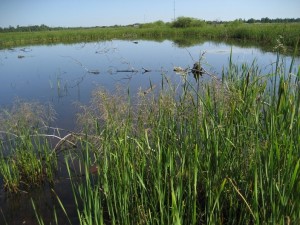Facing Extinction: Climate Migrant Crisis
 In recent days, President Trump has declared that he would have the United States withdraw from the Paris climate accord. Business leaders like Elon Musk of Tesla have said that this decision would ultimately harm the economy by yielding the jobs of the future in clean energy to foreign competitors. I argue that withdrawing from the Paris climate accord also serves to exacerbate the climate migrant crisis that will inevitably hit American shores.
In recent days, President Trump has declared that he would have the United States withdraw from the Paris climate accord. Business leaders like Elon Musk of Tesla have said that this decision would ultimately harm the economy by yielding the jobs of the future in clean energy to foreign competitors. I argue that withdrawing from the Paris climate accord also serves to exacerbate the climate migrant crisis that will inevitably hit American shores.
The global environment has long impacted migration patterns. For instance, humans have historically left places when deteriorating conditions threatened their survival. However, accelerated effects from climate change are expected to bring about significant and unprecedented changes to global migration patterns. Climate change is rapidly destabilizing global environments,(1) resulting in increasingly more common rising oceans, longer and more frequent droughts, and higher temperatures.(2) Consequently, changes to global environments will inevitably dislocate people from their homes and nations. In fact, many communities have already started to suffer from the disastrous consequences of climate change. For example, in Gabura, Bangladesh, many of the three thousand people who live in this coastal region have been forced to move their homes onto skinny, man-made embankments to flee the rising ocean.(3) Yet because of increasingly cramped conditions and dwindling resources, villagers are unable to work, farm, and live as they traditionally have.(4) Unfortunately, there is no relief in sight, as scientists predict rising waters will completely submerge Gabura and at least seven percent of all Bangladesh before the end of the century.(5) Parallel stories of growing displacement caused by rising sea-levels,(6) more frequent droughts,(7) and retreating sea ice(8) are found in ever increasing numbers all around the globe.
As nations debate the causes and treatments for climate change, people everywhere are struggling to adapt to new environmental realities. Regrettably, for many adaptation will mean leaving their countries to survive. Such people who are induced to leave their home country because of the climate change are referred to as “climate migrants”.(9) Presently there is little empirical research to provide anything more than a rough prediction of population displacement that will occur because of climate change.(10) In fact there is a wide variety of predictions; however this does not undermine the urgency to address the climate migrant crisis. For example, Christian Aid, a British organization that actively provides refugee assistance, predicts that the global number of displaced people may rise to more than one billion by the year 2050, in large part due to climate change.(11) In comparison, ecologist Norman Myers reports that up to 200 million people may be become climate migrants by the end of this century.(12) Despite the lack of empirical research, what is certain is that global warming will lead to massive population displacements and climate migration at numbers never before witnessed.(13) Such displacement will almost certainly lead to extinction of peoples and cultures.

